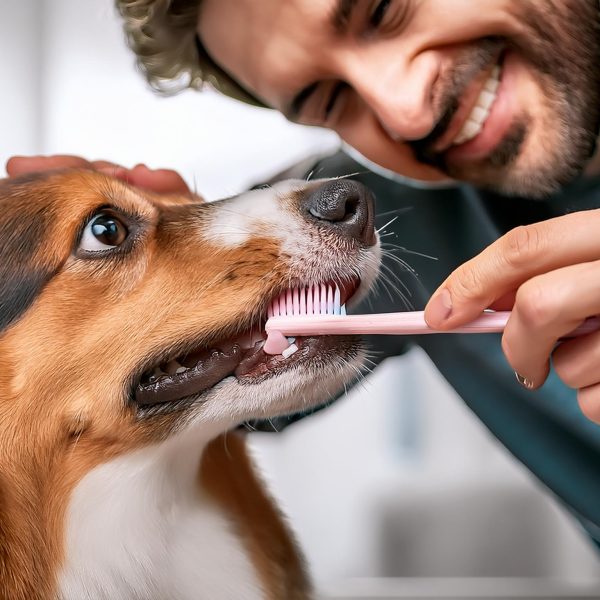Our pets, whether they have fur, feathers, or scales, are cherished members of our families. As owners, it is our duty to ensure that they receive the optimal nutrition necessary for a healthy and contented life. In this guide, we will delve into the nutritional requirements of our beloved companions, exploring the components of a pet’s diet and providing valuable insights into how to meet their unique dietary needs.
Understanding the Basics of Pet Nutrition
1. Vital Nutrients: The Cornerstones of Good Health
Similar to humans, pets require a combination of nutrients to thrive. These nutrients encompass proteins, carbohydrates, fats, vitamins, and minerals. Each nutrient plays a role in supporting bodily functions ranging from energy production to bolstering their immune system. By providing a rounded diet, we ensure that our pets receive these nutrients in appropriate proportions.
2. Proteins: The Building Blocks for Vitality
Proteins are vital for the growth, maintenance, and repair of tissues within a pet’s body. High-quality sources, such as meat, fish, and eggs, offer amino acids that pets cannot produce on their own. The protein levels in food should be suitable for the type of animal, their age, and overall health.
3. Carbohydrates: Fueling Daily Activities
Carbohydrates act as the source of energy for pets. While dogs are omnivores and can efficiently digest carbohydrates, cats, being carnivores, have a lower requirement for carbs. High-quality sources of carbohydrates like grains and vegetables provide fiber and energy to a pet’s diet.
4. Fats: Essential for Absorbing Nutrients
Fats are crucial for absorbing vitamins (A, D, E, and K) and offer a concentrated source of energy. Omega-3 and omega-6 fatty acids found in fish oils and certain plant oils promote skin, coat, and overall immune function. It’s important to consider fat content to prevent obesity and related health issues.
5. Vitamins and Minerals: Micronutrients for Well-being
Vitamins and minerals play roles in a pet’s health, from bone development to immune system function. A balanced diet for pets includes a mix of these micronutrients. While some vitamins can be produced by the pet’s body itself, others must be obtained through their diet.
Customizing Nutrition Based on Pet Needs
1. Diets Tailored to Each Species: Dogs vs. Cats
It’s important to understand the requirements of species. Dogs are omnivores and can thrive on a diet that includes both animal-based and plant-based ingredients. On the other hand, cats are carnivores and need a higher proportion of animal-derived proteins and fats.
2. Considering Different Life Stages: Puppies and Kittens to Seniors
The nutritional needs of pets change as they go through life stages. Puppies and kittens require diets that are rich in nutrients to support their growth and development. Adult pets benefit from balanced maintenance diets, while seniors may need adjustments to accommodate changes in their metabolic rates and potential health issues.
3. Variations based on Breed and Size: Big Dogs vs. Small Dogs
Breed and size also play a role in determining the diet for pets. Large breed puppies, for instance, have needs to support controlled growth and maintain joint health. Small breed dogs may have energy requirements compared to their body size.
4. Health Conditions: Using Nutrition as an Approach
Nutrition can be a tool in managing or preventing various health conditions in pets. Specialized diets can benefit pets with allergies, sensitivities, or chronic diseases. It is important to seek guidance from a veterinarian when determining the approach for pets with specific health concerns.
Understanding Pet Food Labels
1. Comprehending Ingredient Lists
Pet food labels can sometimes be confusing. It’s important to understand the information provided in the ingredient lists. Typically, ingredients are listed from highest to lowest based on their weight. Pay attention to ingredients that you recognize and are of quality while also considering the presence of filler ingredients.
2. Assessing Protein Quality and Sources
Determining the source and quality of protein is crucial when selecting food. It’s preferable to choose products that specifically mention named animal proteins, like “chicken” or “salmon,” rather than using terms such as “meat meal.” High-quality protein sources greatly contribute to the value of the pet food.
3. Minimizing Fillers and Additives
It’s advisable to minimize the inclusion of fillers, artificial preservatives, colors, and flavors in food. Opt for nutrient ingredients instead, ensuring that your pets receive nutrition without unnecessary additives.
4. Evaluating Nutritional Adequacy Statements
Most pet food labels contain statements indicating whether the food meets requirements set by authorities. Look for phrases like “complete and balanced” to ensure that your pets are getting nutrition from their diet.
Transitioning Diets, with Care and Monitoring
1. Gradual Diet Transitions
When switching your pet’s food, it’s important to do so gradually to prevent any digestive issues or discomfort. Gradually increase the proportion of the new food while decreasing that of the old over a few days. This allows your pet’s digestive system time to adjust smoothly to their diet.
2. Keeping an Eye on Weight and Body Condition
It’s important to monitor your friend’s weight and body condition. Maintaining a healthy weight is crucial for their well-being. Adjusting portion sizes when necessary can help prevent obesity or excessive weight loss.
3. Regular Vet Check-ups
Regularly consulting with a veterinarian is vital to assess your pet’s health and nutritional requirements. Veterinary professionals can offer recommendations based on factors such as age, lifestyle, and any existing health conditions.
Homemade vs. Store Bought Diets
1. Finding Balance in Homemade Diets
Some pet owners choose homemade diets to have control over the ingredients they use. However, it’s important to pay attention to balance and consult with a nutritionist when formulating a homemade diet that meets all of your pet’s nutritional needs.
2. Trustworthiness of Store-Bought Diets
Pet foods are carefully formulated to meet nutritional standards. Trusted brands invest in research and quality control measures, ensuring nutrition in their products. Opting for a commercial diet offers convenience and the assurance of providing balanced nutrition for your pet.
Taking a Well-Rounded Approach to Pet Nutrition
In conclusion, providing optimal nutrition for our pets requires considering their unique needs based on factors like species, life stage, and health conditions—a holistic approach is key. Taking the time to read and understand food labels, keeping an eye on your pet’s weight, and seeking advice from veterinarians are all important aspects of being a responsible pet owner.
It’s crucial to invest time in researching and choosing the food that suits your furry friend’s specific needs. This helps promote their life, energy, and overall health. As owners, it is our responsibility to prioritize their nutritional requirements, ensuring that our beloved companions enjoy a healthy and joyful life with us by their side.








